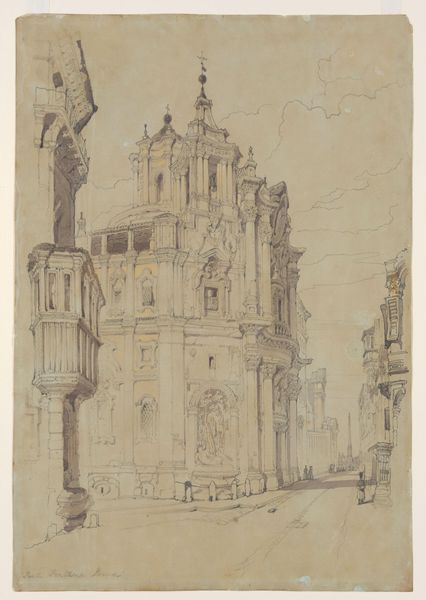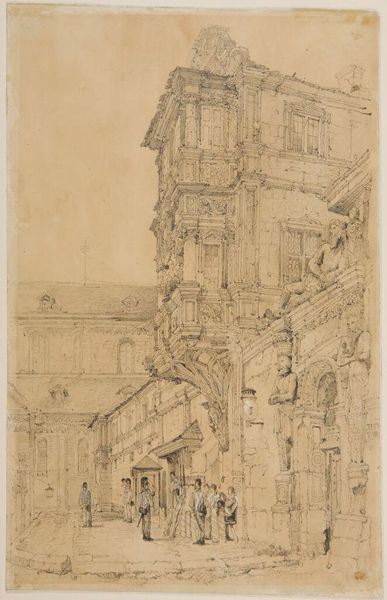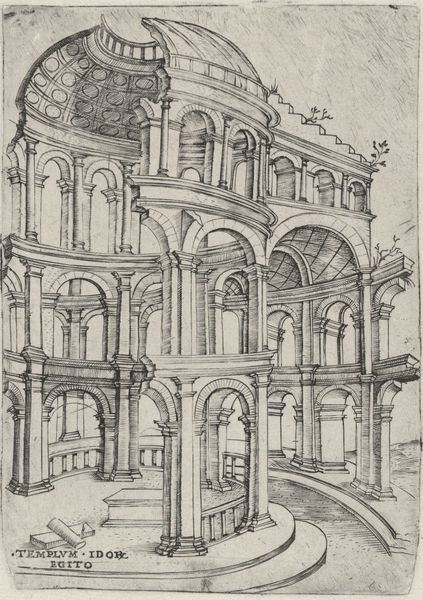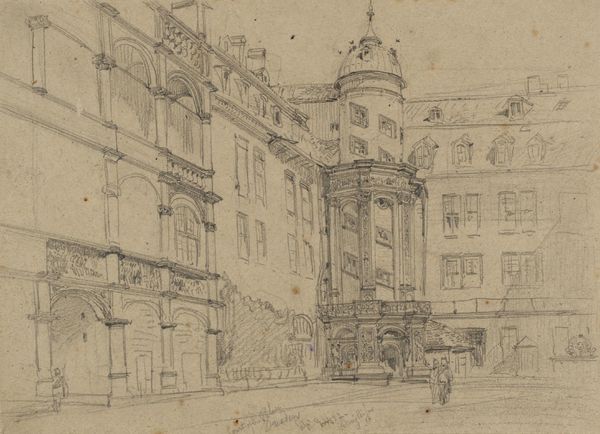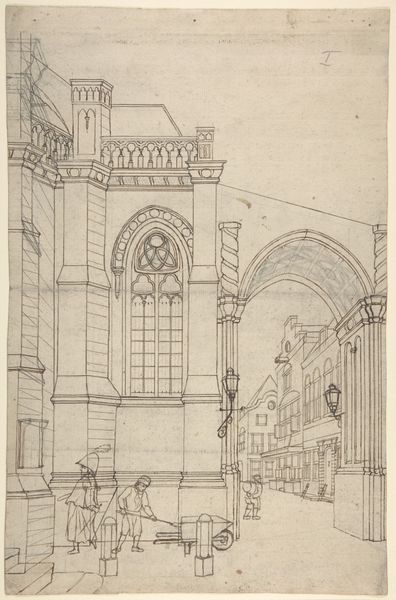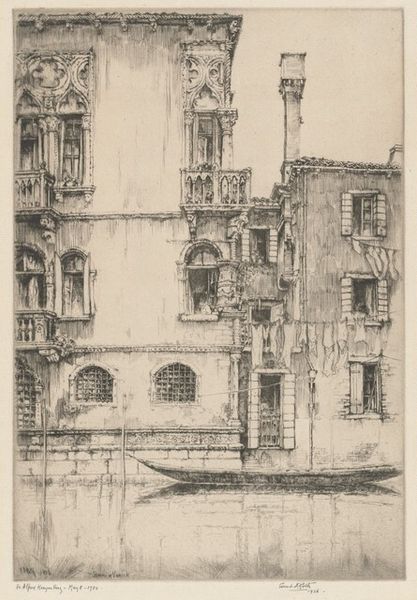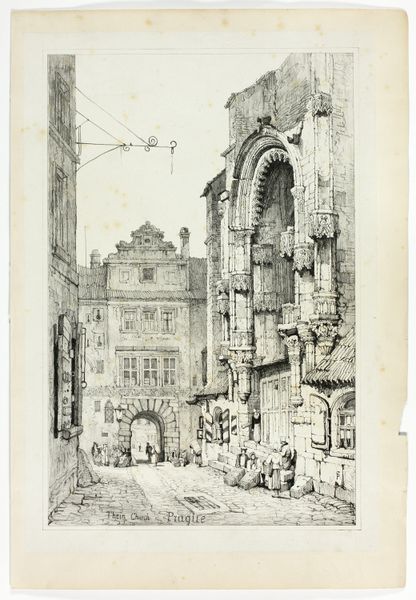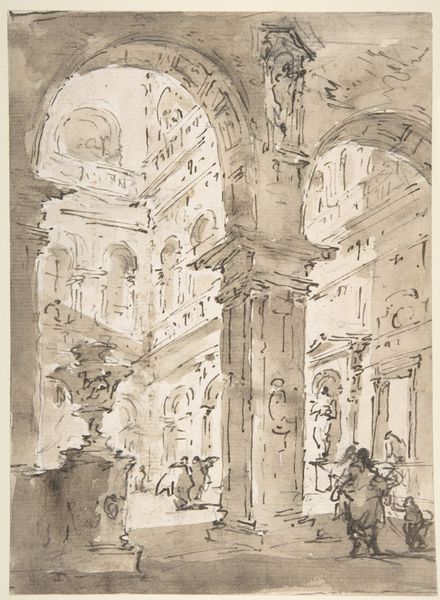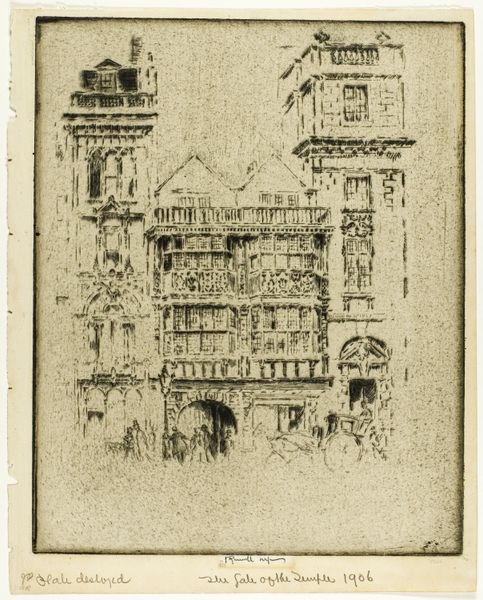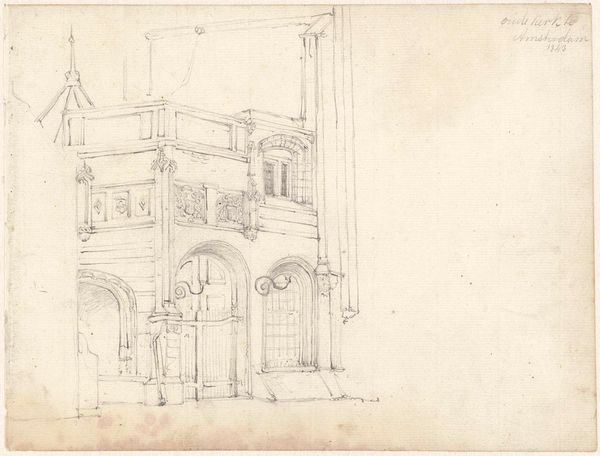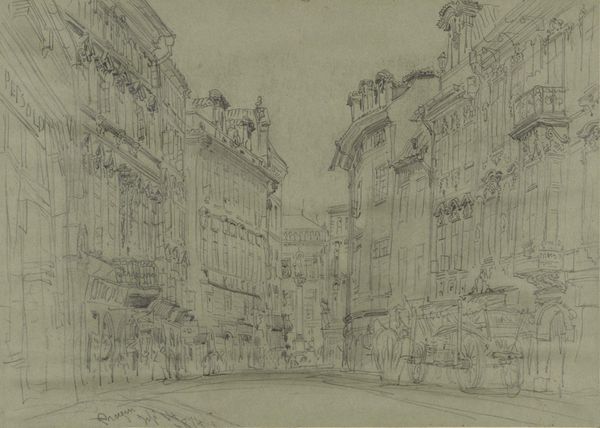
drawing, paper, ink, architecture
#
architectural sketch
#
landscape illustration sketch
#
drawing
#
mechanical pen drawing
#
pen sketch
#
sketch book
#
landscape
#
paper
#
personal sketchbook
#
ink
#
sketchwork
#
pen-ink sketch
#
line
#
pen work
#
cityscape
#
storyboard and sketchbook work
#
architecture
#
realism
Dimensions: height 325 mm, width 240 mm
Copyright: Rijks Museum: Open Domain
Editor: This is Wilhelm Cornelis Bauer's "Binnenplaats van het Château Chambord," created between 1872 and 1904, using ink on paper. The architectural detail is incredible! What I find interesting is the way the linear perspective flattens the space, yet creates depth and almost infinite viewpoints. How do you interpret this work? Curator: It strikes me as a potent representation of power and the spaces that enable it. Consider the Chateau Chambord itself: built by royalty, a monument to authority and privilege. Bauer, by depicting this architectural marvel, participates in a complex discourse of representation. Do you notice the sketch-like quality? It suggests a process, an act of witnessing. Editor: Yes, it definitely feels like a fleeting impression rather than a perfectly polished rendering. Curator: Precisely! And I wonder, does that hint at a critique? A critical study? Think about Bauer’s position – a late 19th/early 20th century artist grappling with the legacies of feudal power structures. How does the act of sketching, of capturing this space, potentially democratize it, make it more accessible? Perhaps even question its inherent authority? Editor: I never thought about it that way. The sketchiness makes the château feel less intimidating and grandiose. More approachable. Curator: Exactly! It's almost as if the drawing brings it back down to earth, acknowledging the human element within this monument. Bauer’s artistic rendering becomes an exercise in reinterpreting the traditional notions of aristocracy and dominance embedded in such architecture. Editor: So by deconstructing the clean, perfected image of the château, Bauer makes a commentary on the structures of power it represents? Curator: Indeed! By using his sketch as a form of cultural intervention. Food for thought, no? Editor: Absolutely! I’ll never look at architectural sketches the same way again!
Comments
No comments
Be the first to comment and join the conversation on the ultimate creative platform.
